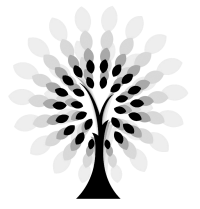Magic
In common terms, magic is the art of producing a desired outcome through occult means. Various arts are described as magical, from common street illusionists, village herbalists, and rituals for the intercession of deities. However, true magic is the art and science of elemental mastery, harnessing elemental creatures and instructing them to perform simple or complex tasks.
Magicplugin-autotooltip__small plugin-autotooltip_bigMagic
Magic, also called thaumaturgy is the art and science of harnessing elementals, and instructing them to carry out simple or complex tasks.
Invoking more powerful spirits or gods is a related but much more dangerous art, called theurgy.
Subcategories
Top Articles
topics sidebar beliefs
 plugin-autotooltip__small plugin-autotooltip_bigMagic
plugin-autotooltip__small plugin-autotooltip_bigMagic
Magic, also called thaumaturgy is the art and science of harnessing elementals, and instructing them to carry out simple or complex tasks.
Invoking more powerful spirits or gods is a related but much more dangerous art, called theurgy.
Subcategories
Top Articles
topics sidebar beliefs
This is in a series of articles about magic, thaumaturgy and esotericismplugin-autotooltip__small plugin-autotooltip_bigMagic
Magic, also called thaumaturgy is the art and science of harnessing elementals, and instructing them to carry out simple or complex tasks.
Invoking more powerful spirits or gods is a related but much more dangerous art, called theurgy.
Subcategories
Top Articles
topics sidebar beliefs.
In Anrel, the word “magick” is preferred when referring to the “true magick” of thaumaturgy, but to the layperson, all these arts are considered magicka, although they achieve their ends using very different means:
Form of Magic
True magic involves harnessing the power of ethereal beings, often called spirits or elementals. There are several forms of true magic:
Thaumaturgy
Thaumaturgy, also called Magistry, Elemental Mastery or “High Magick”, is considered by practitioners to be the purest but most complex form of magic. It requires the knowledge and skill of summoning an elemental, binding it to your will, and instructing it to perform practical tasks. Thaumaturgy requires long years of study, in order to learn the languages and techniques used to instruct elementals. It also requires a vigorous understanding of the physical world and natural sciences, as well as a thorough moral grounding. To a skilled practicioner, thaumaturgy is a flexible and powerful art.
Theurgy
Theurgy, or god-magic, is achieved by appealing to a god-spirit, to intervene and carry out a particular action. Theurgical practice varies hugely depending on the god-spirit, or “deital”, but most are highly ritualised and transactional. Because it so codified, theurgical ritual magic can be powerful, but it is not very flexible. It requires belief in the power of the god and knowledge of the rituals required, but can be carried out with no knowledge or understanding of the principles of thaumaturgy.
Luminate Natural Magic
While thaumaturgy and theurgy are both highly systematic, natural magic is the inborn ability of rare individuals to bond with and instruct elementals, initially on an unconscious level. Such people are called “luminate”, since the light of their mind is highly attractive to elementals.
These abilities appear at a young age, with elementals gathering around a luminate child and carrying out their subconscious desires. These particularly manifest at times of emotional stress, resulting in objects spontaneously moving, or flashes of light, sound, images or fire. Sometimes these outbursts result in injury or death. Luminates are believed to have been the founders of many cults and even world religionsplugin-autotooltip__small plugin-autotooltip_bigWorld religions
This is a list of the major religious movements in the modern world, particularly those with an international influence.
topics beliefs cult1. They have also been persecuted and put to death as witches or demons.
Shamanic Magic
Shamanic magic is related to theurgy and natural magic, but uses a range of techniques to elevate the normal non-luminate mind to attract and non-verbally instruct common elementals. Common techniques include herbs, drugs, ritual dance, chants and breathing techniques. Once in this mental state, the shaman uses meditation and repitition to focus on the desired outcome for the elemental to carry out. Common products of shamanic magic are lights or illusions, fire, healing or attacking enemies.
Shamanic magic is particularly used by tribal societies to provide ritual rights of passage, to promote social cohesion through group ritual, and to demonstrate and legitimise the powers of a priestly elite.
The religions of the Junda, Gaal and Veedormim are examples in recent history of highly institutionalised shamanic magic.
The Gnostician School of Rasia theorised that tribal shamanic magic often evolved into theurgy by attracting the attention of unbound elementals.
Chymistry
Chymistry is the art of combining mundane or exotic substances, such as metals, salts, ores or herbs, to create a particular effect. It is not true magic but often considered such by lay people. A compass, for example, is an everday product of the chymical art, which seems magical to the common mind, despite being unrelated to thaumaturgy.
Chymistry encompasses many arts, including herbalism, physick, optics and metallurgy. Chymical arts can also be combined with thaumaturgy to produce complex effects, such as delivering medicine to internal organs, or complex chemical transformations.
Conjuring
Conjuring, or prestidigitation, is use of manually dexterity and sleight of hand to perform an illusion. Conjuring is practiced mostly by street entertainers, who are perhaps the only ones to use the word “magick” with relish, but is also used by pickpockets, thieves and other insalubrious persons to extort money from the gullible.
